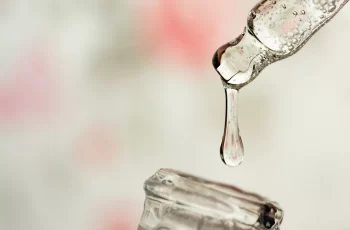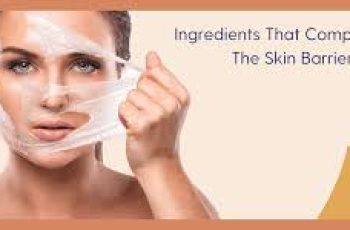
How to Dilute Salicylic Acid Powder?
If you’re like me and consider yourself to be fairly “informed” when it comes to skincare, you’d be surprised to find that every now and then there’s a product or ingredient that makes you do a double take. That’s exactly what happened to me when I stumbled upon salicylic acid powder. I admit, after the initial babble, it made perfect sense to find out you could find this potent beta hydroxy acid in powder form.
With that in mind, I wanted to share with you all of the information I’ve discovered about salicylic acid powder and its effects on your skin. So let’s dive in together and learn more.
What is Salicylic Acid Powder?
Salicylic acid is one of the most commonly used beta hydroxy acids and is often found in a variety of different skincare products. It’s praised for its ability to penetrate deep into pores and remove excess sebum, dirt, bacteria, and other impurities. Since this potent powerhouse is also available in powder form, it can be used to address even more issues, from treating warts, calluses, psoriasis, to dandruff.
You can purchase salicylic acid powder or get it by prescription. Both are highly effective and must be used as directed to avoid skin irritation and sensitivity. If you have concerns, it’s best to talk to your doctor about the most effective ways to incorporate salicylic acid powder into your daily routine.
How to Mix Salicylic Acid Powder?
If you want to mix your own salicylic acid solution with BHA powder at home, there are a few things you need to keep in mind. The following guide explains how to do it and how to mix your own effective products to eliminate blemishes, reduce inflammation, and perform chemical peels.
Step 1 – Choose a Base Oil for Your Formula
Base oils are the main ingredients in a formula that not only moisturize the skin, but also help the active ingredients distribute across the face and be absorbed by the skin.
Considering your skin type will help you choose the base oil that will be most beneficial to your skin. Those who tend to be oily and have more impurities are best suited to jojoba and grapeseed; those who are drier will be best suited to sweet almond oil and avocado.
Step 2 – Choose the Best Essential Oils
This is an extra step you can take because if you suffer from sensitivity, it’s best to avoid using essential oils. For those who aren’t dry or sensitive, adding essential oils will give your formula an extra boost and help address any issues. For example, tea tree oil is ideal for fighting blemishes and acne-prone skin. Lavender, on the other hand, helps soothe inflammation and reduce redness. You need about 20 drops of essential oil for the best results.
Step 3 – When to Add Salicylic Acid Powder
Of course, the amount of powder you add to the mixture will determine its effectiveness. If you want my advice, I recommend using a gentle and effective formula to ensure that you don’t experience unwanted side effects if you overdo it and use too much. Each salicylic acid powder is different, so always read the instructions on the packaging. One tablespoon of powder is considered the optimal amount for active salicylic acid content. Don’t forget that if at any time you’re concerned that your solution is becoming too strong, consult a doctor or a trained professional to determine and avoid unpleasant side effects.
Step 4 – Dissolve the BHA with Propylene Glycol
Before adding salicylic acid to the oil, it must be dissolved. The best way to do this is to use propylene glycol, which is available in every pharmacy.
Step 5 – Find the Best Packaging
Once the solution is mixed, transfer it to an opaque bottle. Try to keep them upright. There may be signs of separation of the ingredients in the first few days. All you have to do is shake the formula to remix the ingredients. Store the product in a cool, dark place out of direct sunlight and in a room with fluctuating temperatures.
How do you dissolve salicylic acid powder?
Salicylic acid is notoriously difficult to dissolve. Salicylic acid powder is best dissolved with a mixture of alcohol, water, and propylene glycol. If you have trouble finding these, vegetable oils may be a good substitute for propylene glycol.
How do you use salicylic acid powder at home?
The recipe I described earlier is an ideal way to use salicylic acid powder at home. By making sure you have the right amount of salicylic acid in your home remedy, you can fight impurities and bacteria on the surface of your skin, which often accumulate there and can cause problems ranging from blemishes and breakouts like acne to a dull, dull complexion, not to mention warts, corns, and calluses.
What is the best way to use salicylic acid?
There are many ways to use salicylic acid in your skin care routine. BHAs are commonly found in many skin care products, but the most effective are in exfoliating toners and night serums. Depending on your skin type, you can also use these products and how often you use them. If you have oily skin and acne, you can use salicylic acid twice a day. If you have drier skin, you should avoid this and opt for gentler acids like lactic acid or a member of the PHA family.
If you want to learn more about salicylic acid, you can read our dedicated blog post on salicylic acid.
That’s it for diluted salicylic acid powder. If you have any skin care questions, don’t forget to visit us on Instagram.


